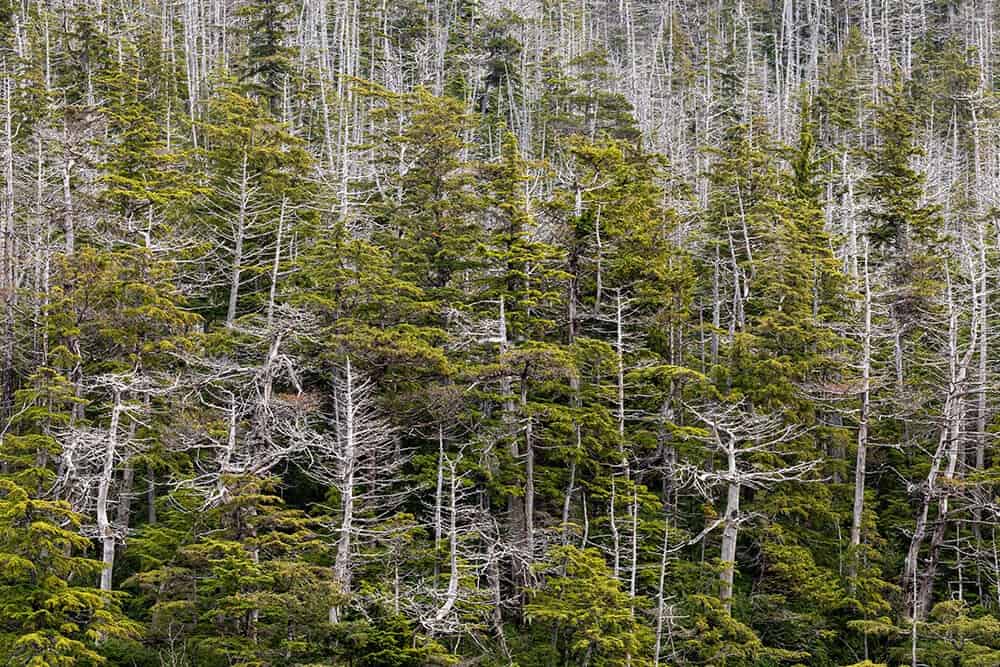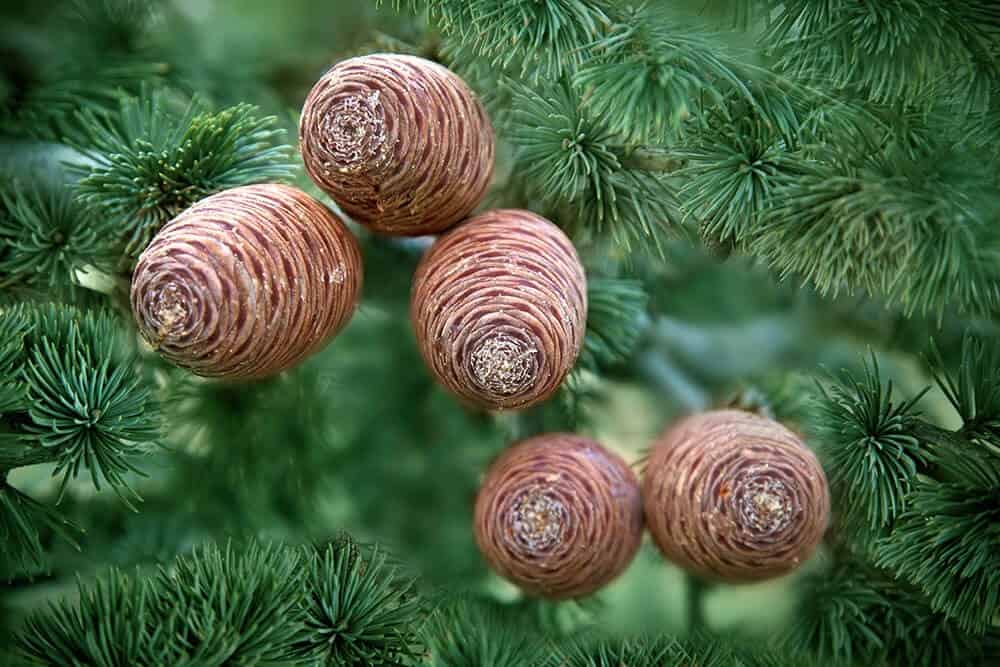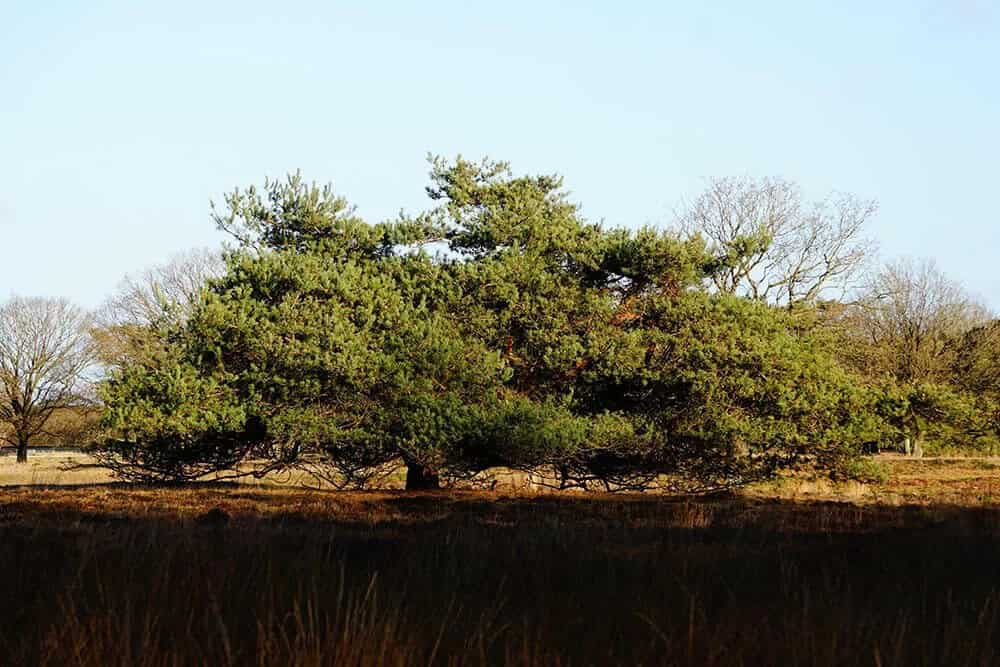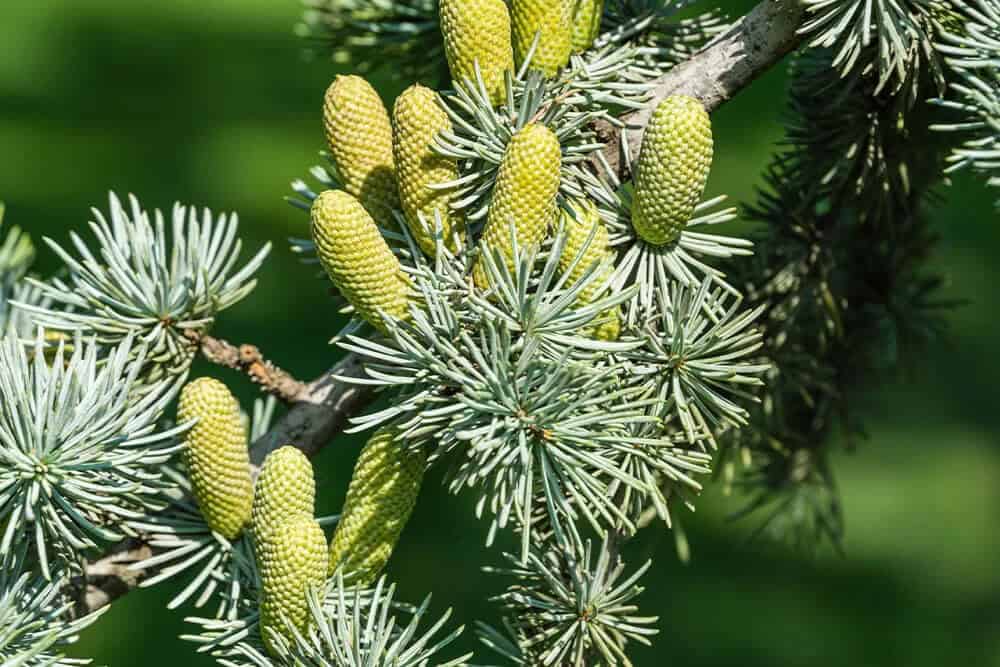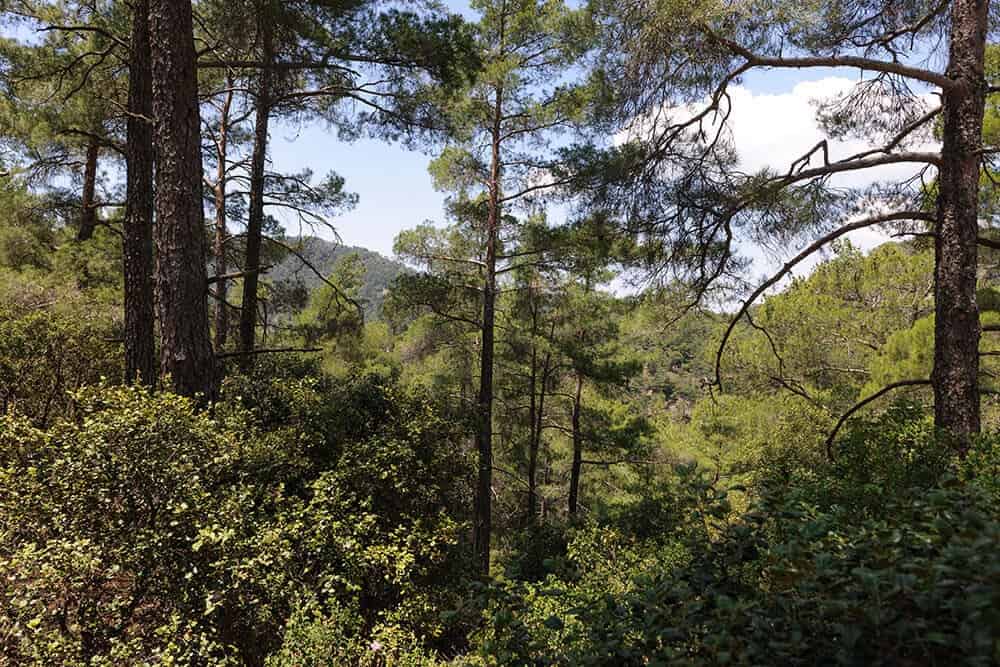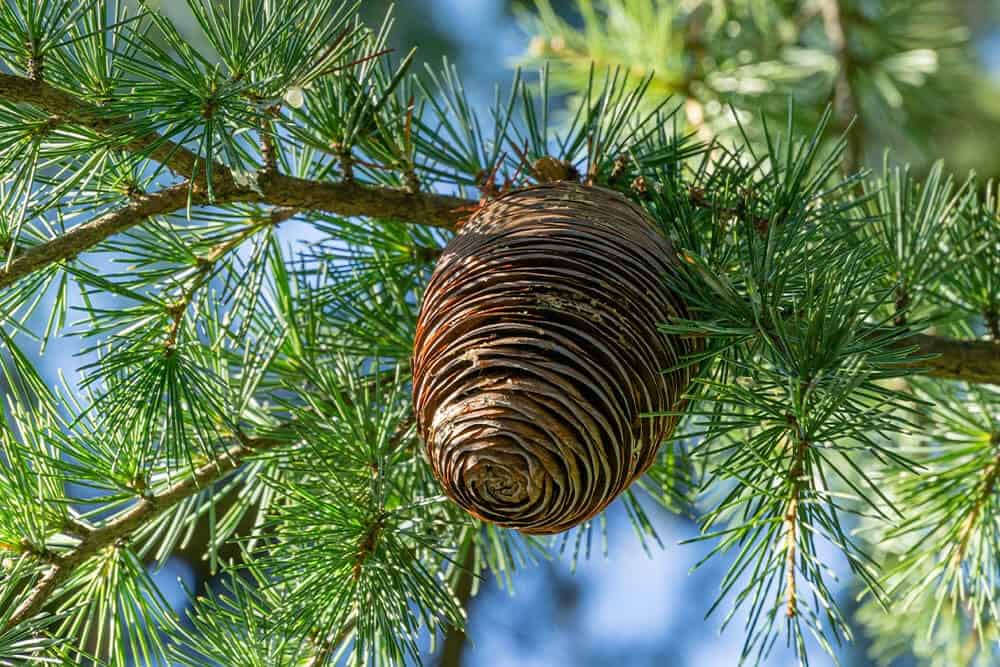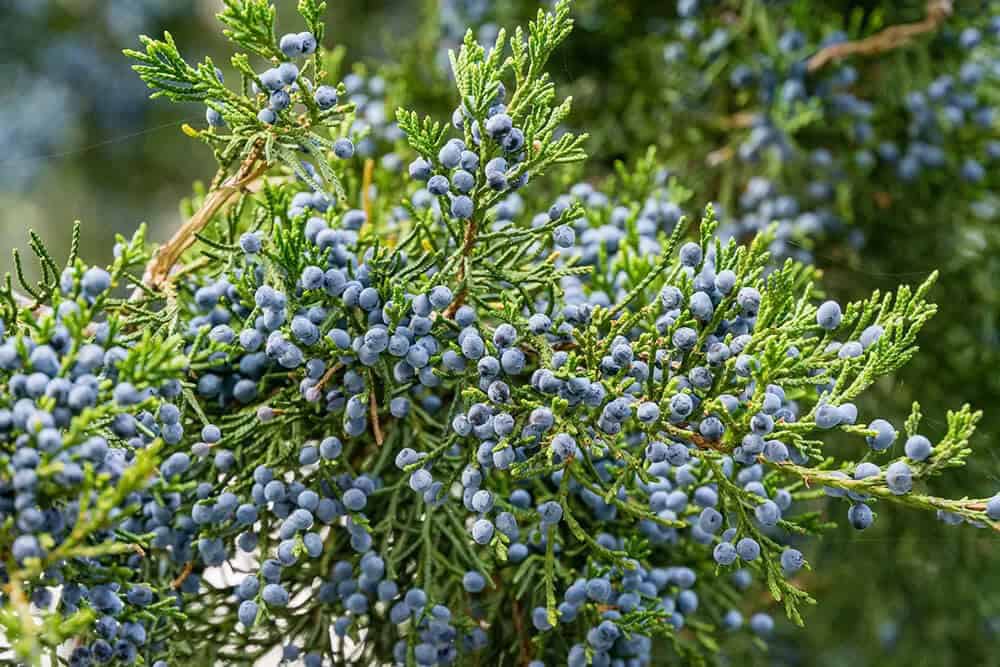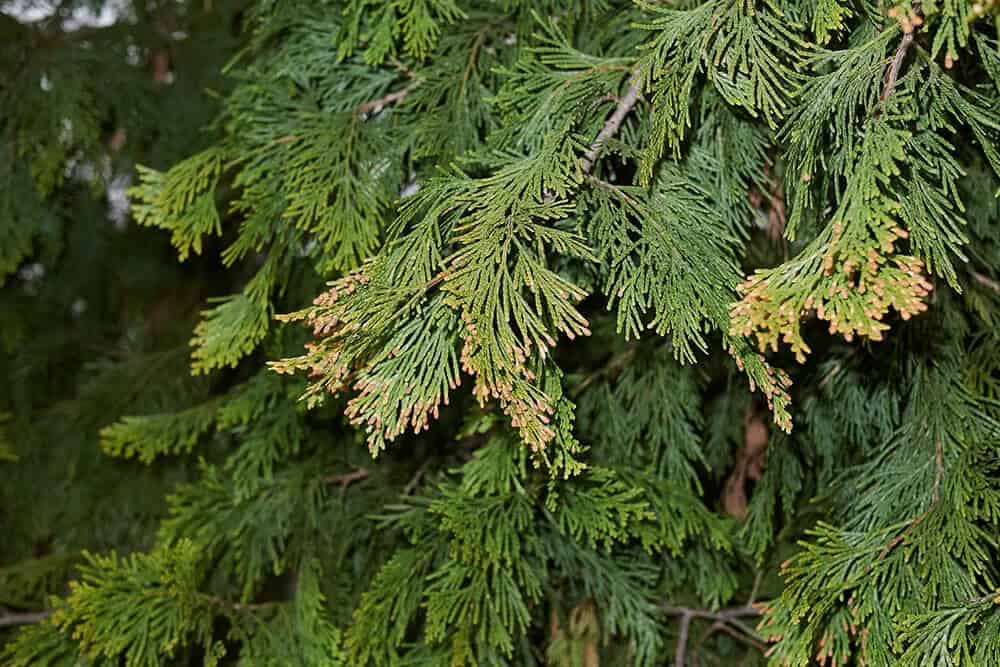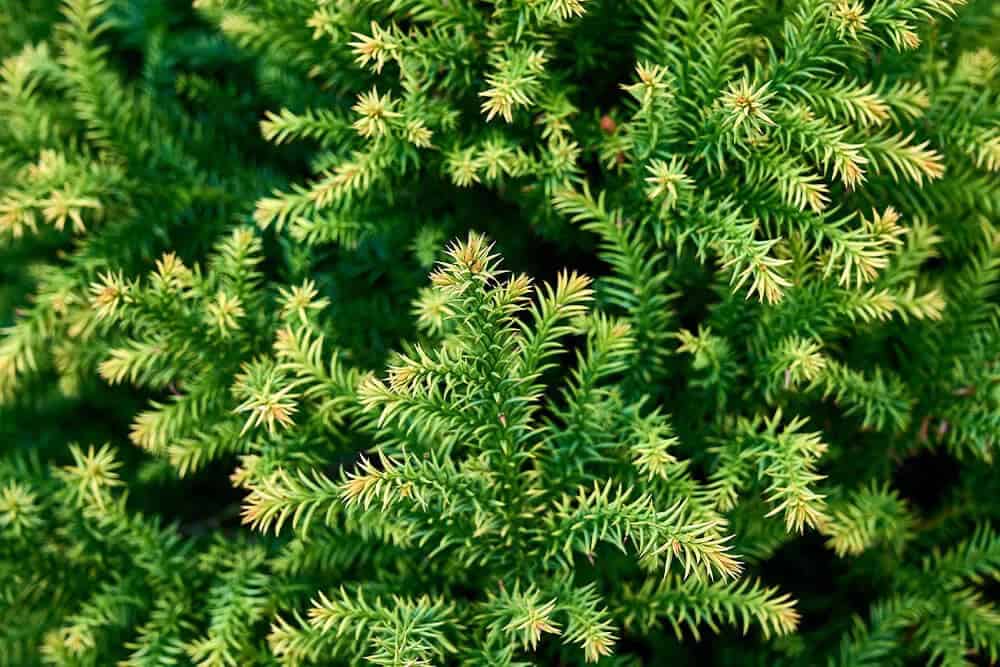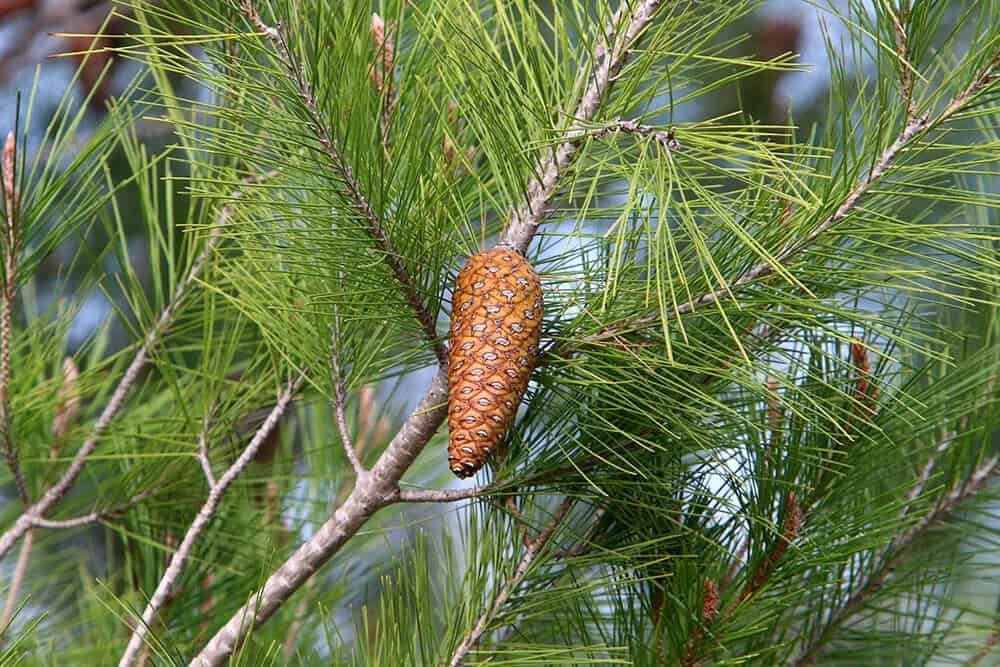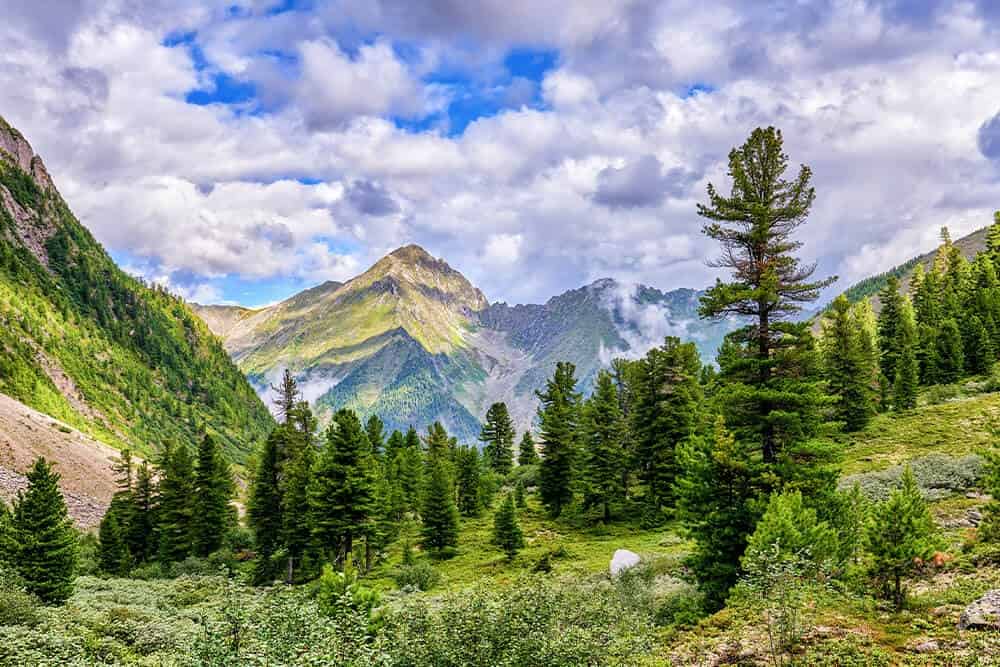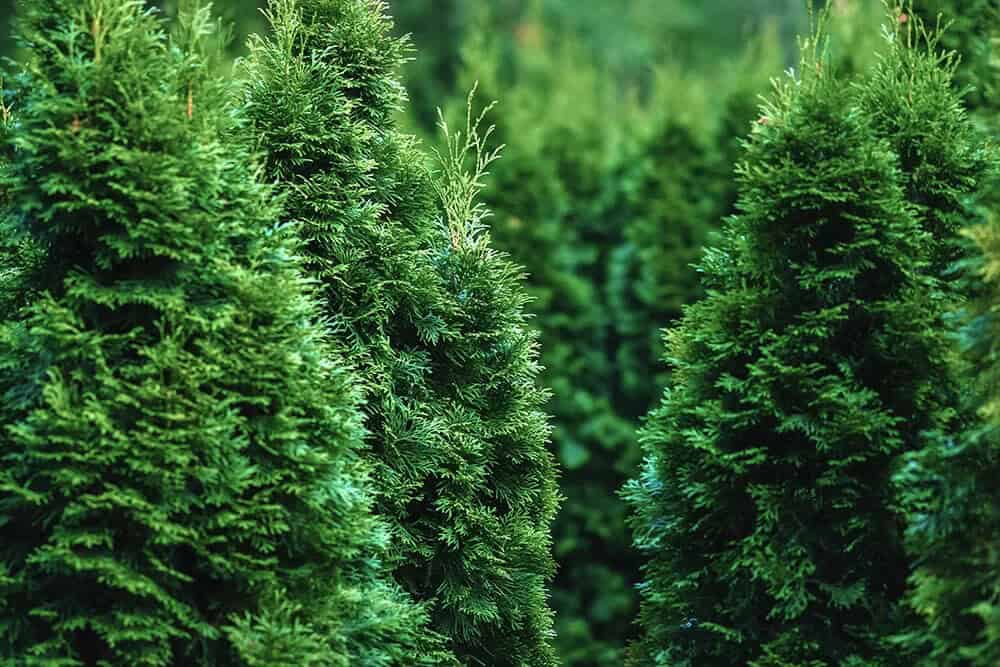When seeking an evergreen tree species that maintains a lush appearance year-round while providing privacy, wind screening, and ornamental value, several options stand out as reliable choices. Cedar trees are particularly well-suited for these purposes, with many individuals assuming that all cedar trees share similar characteristics. In reality, there is a diverse range of cedar tree types, each boasting distinct features that set it apart from others.
This article aims to familiarize readers with the most popular cedar tree varieties, allowing you to make an informed decision and choose the best species for your needs.
Key Takeaways
While it’s true that there are several species of trees that bear the name ‘cedar’, not all of them belong to the true cedar family. Nevertheless, many non-cedar species share similar characteristics with their true cedar counterparts. For instance, both types of trees are known for their evergreen foliage and ability to provide privacy and wind protection. This makes them popular choices for landscaping purposes.
Interestingly, cedar trees have a global distribution, with different species hailing from various parts of the world. The names of these species often reflect their geographic origins. Furthermore, many cedar tree varieties are valued for their wood, which is highly sought after for construction and woodworking projects. As such, they can be grown both naturally and cultivated in one’s yard, offering homeowners a range of options to suit their preferences.
13 Various Types of Cedar Trees that Give You Plenty of Options to Choose From
Alaskan Yellow Cedar (Cupressus nootkatensis)
While it’s true that cedars can be found in various parts of the world, one notable exception is Alaska, where the Alaskan yellow cedar (Cupressus nootkatensis) is the most prevalent species. This lovely variety not only thrives in its native range across Canada’s west coast and the Pacific Northwest United States but also boasts a unique profile that sets it apart from other cedars outside of this region.
Characterized by a straight, rigid trunk and branches that support pendulous foliage in a loose pyramidal shape, the Alaskan yellow cedar tree is an attractive sight to behold.
Atlas Cedar (Cedrus atlantica)
The Atlas Cedar (Cedrus atlantica) stands out as one of the four true cedar species with non-descript common names. Despite its unassuming title, it’s a notable specimen, boasting an impressive height of 60 feet and width of 30 feet at maturity, with a pyramidal shape reminiscent of other cedar varieties. What sets the Atlas Cedar apart from its peers is its extraordinary foliage color – a soft blue hue that borders on silvery.
This unique characteristic has given rise to several popular cultivars, many of which highlight this distinctive feature.
Bermuda Cedar (Juniperus bermudiana)
While many people associate cedar trees with mountainous regions or bold colors, there’s another type of cedar that thrives in warmer climates and coastal areas. The Bermuda cedar tree, although not a true cedar botanically speaking, boasts a striking appearance with a sturdy trunk and an irregular canopy of branches and foliage. Despite its beauty, this evergreen is critically endangered, making it all the more urgent to plant one now before it disappears entirely.
Blue Atlas Cedar (Cedrus atlantica ‘Glauca’)
The blue atlas cedar, Cedrus atlantica ‘Glauca’, marks our first cultivated variety on this list. This cultivar takes the naturally blueish silver needle coloration of its parent species, the atlas cedar, and elevates it to a richer, more vibrant hue. As a result, it’s an ideal choice for creating a focal point in your garden. While its foliage characteristics differentiate it from the regular atlas cedar, other features remain strikingly similar.
The blue atlas cedar’s unique coloration is a testament to the versatility of cultivars, which can emphasize specific traits like foliage colors.
Cyprian Cedar (Cedrus brevifolia)
The second true cedar type, according to botanical classifications, is the Cyprian cedar tree. Standing at approximately 40 feet tall when mature, it’s slightly shorter than its predecessor. Despite sharing a similar pyramidal shape with the atlas cedar, the Cyprian cedar tree distinguishes itself through its foliage characteristics.
The small, numerous needles of the Cyprian cedar tree grow tightly to the stem, resulting in a more delicate and airy canopy texture compared to other cedar varieties.
Deodar Cedar Tree (Cedrus deodara)
The deodar cedar tree, scientifically known as Cedrus deodara, is a large evergreen species that boasts remarkable foliage. Its needles are relatively rigid and thin, forming a green pyramidal canopy with a subtle grayish tint. While the needles are impressive, it’s the cones of this tree that truly steal the show. Upright and pointing towards the sky, each cone features an astonishing number of layers, giving it a richly intricate appearance.
This striking feature makes the deodar cedar tree a standout in terms of ornamental value.
Eastern Red Cedar Tree (Juniperus virginiana)
While not a true cedar, the eastern red cedar is arguably the most well-known type of tree with ‘cedar’ in its name. This stunning evergreen species is a popular choice for hedges and specimen plants due to its attractive foliage and versatility. The dense, conical shape formed by its foliage is particularly striking, and it’s not uncommon for the leaves to take on a reddish hue at times.
In stark contrast to its dark greenery, the eastern red cedar produces small, bright blue fruits in tight clusters every year, adding an extra layer of visual interest to this already impressive tree.
Golden Deodar Cedar (Cedrus deodara ‘Aurea’)
The trend of cultivated versions among previous true cedars on this list continues with the deodar cedar, which boasts a prominent cultivar in the form of the golden deodar cedar, or Cedrus deodara ‘Aurea.’ Standing out from its peers, the golden deodar cedar tree is relatively compact, reaching an average height of 20 feet. This makes it an ideal option for those with limited growing space, who may not have the room to accommodate a massive cedar tree.
Beyond its smaller stature, the golden deodar cedar tree’s foliage also sets it apart from other cedars, earning it its common name. The plant’s leafage is characterized by golden hues that gradually transition to a rich green as they mature, providing a striking visual contrast.
Incense Cedar (Calocedrus decurrens)
The incense cedar, also known as the California incense cedar tree, is a species characterized by its highly variable growth habit. Its stature can range from a modest 15 feet to an impressive height of over 100 feet, showcasing its remarkable adaptability. However, this slow-growing nature means that it may take time for the tree to reach its mature size. Nonetheless, this trait also contributes to the incense cedar’s ease of care and management.
Furthermore, these trees are often renowned for their exceptional drought resistance, making them an ideal choice for regions with limited rainfall.
Japanese Cedar (Cryptomeria japonica)
Among the many stunning cedar trees we’ve discussed and will discuss, the Japanese cedar stands out for its exceptional visual appeal. Its foliage is particularly noteworthy, boasting a unique green hue with subtle yellow undertones that add a pop of vibrancy to the landscape. The tree’s seed cones are also a striking feature, dangling from branches in small clusters with a distinctive spiky texture.
Furthermore, the bark of the Japanese cedar tree is remarkably eye-catching, featuring long peeling strips that separate as the tree matures, revealing a light brown color with hints of yellowish-orange.
Lebanese Cedar (Cedrus libani)
The fourth and final true cedar species is the majestic Lebanese cedar (Cedrus libani), whose striking presence has made it a recognizable icon worldwide. A significant factor contributing to its widespread recognition is the prominent display of its image on the flag of Lebanon, its country of origin.
Native to Lebanon and surrounding regions bordering the Mediterranean Sea, this tree thrives in optimal conditions, often growing to remarkable heights exceeding 100 feet while boasting expansive canopies that span wider than those of most other cedar species.
Siberian Cedar (Pinus sibirica)
The Siberian cedar tree, although commonly referred to as such, is actually a pine species rather than a true cedar. This distinction is evident in its botanical name, which includes the genus Pinus, characteristic of the pine group. Native to Eurasia, this evergreen thrives in forested landscapes, boasting an unusual combination of slender form and impressive height.
Its natural habitat offers ample opportunities for growth, as it readily adapts to harsh weather conditions, including strong winds and winter’s chill. As a result, caring for this species becomes significantly more manageable when dealing with similar environmental challenges.
White Cedar (Thuja occidentalis)
The white cedar, also known as arborvitae, wraps up our list as one of the most widely used landscaping shrubs in general, not to mention a top choice for hedges. Its popularity stems from its reliability, low-maintenance nature, and ability to effectively block wind, sound, and sight lines in both residential and commercial settings. Although it’s not a true cedar, it’s often referred to as one, which is why it appears here.
To keep your white cedar thriving, be sure to provide it with an abundance of sunlight – it will reward you with minimal upkeep.
Frequently Asked Questions About Cedar Trees
What is the Purpose of a Cedar Tree?
Cedar trees, with their versatility and numerous benefits, can be enjoyed in various ways depending on one’s objectives. Not only do they serve as stunning ornamental evergreens that can enhance any garden, but they also possess functional properties, such as shielding wind or unwanted views/sounds. Furthermore, the commercial value of cedar wood has been a driving force behind its popularity for centuries.
Its widespread appeal stems from the tree’s numerous uses, which have made it a sought-after species since ancient times.
Is Cedar a Pine?
While it’s understandable to conflate the terms ‘cedar tree’ and ‘pine tree’, they are not one and the same from a technical standpoint. The primary distinction lies in their respective genera: true cedar species belong to distinct groups, whereas pines are part of the Pinus genus. Notwithstanding this fact, there exist several plant species that are commonly referred to as cedar trees but are not actually cedars.
A notable example is the Siberian cedar (Pinus sibirica), whose botanical classification solidifies its membership in the pine family, rather than the true cedar family.
Are Cypress and Cedar the Same?
While cypress and cedar trees may appear distinct at first glance, they do share a common bond. Both types belong to the Cupressaceae family, with true cypress species and true cedar species exhibiting a genetic connection. Although their physical characteristics differ, they also display similarities upon closer inspection. Notably, both evergreen tree varieties retain needles or needle-like foliage, highlighting their shared botanical heritage.
Furthermore, these trees possess significant value in both ornamental and commercial contexts, frequently featuring in garden settings and lumber production.
Is Cedar the Tree of Live?
While the term ‘tree of life’ is often casually applied to certain tree types, cedar trees themselves rarely receive recognition under this moniker. Instead, one specific type of tree, bearing a resemblance to cedars in appearance, holds the distinction of being referred to as the tree of life. This tree, known as eastern arborvitae or simply arborvitae, has its Latin name translating directly to ‘tree of life’.
The eastern arborvitae earns this esteemed title due to its properties yielding materials with medicinal value, a fact well-established prior to European settlement in the eastern United States, where the tree is native. As such, it’s the source of valuable resources that have been harnessed for centuries.
What Country is Known for Cedar?
Cedar trees have become ubiquitous in nature and horticulture, with their diverse varieties found across the globe. While they may be widespread, some countries have a deeper affinity for these trees than others. Lebanon is an exemplary case of this connection. Not only does it boast its own distinct cedar species, but the tree also holds official status as a symbol on the Lebanese flag. This visual representation underscores Lebanon’s unique association with cedar trees.
For those fascinated by cedars, the preceding information may not be enough to satiate their curiosity about these fascinating plants. In fact, this interest is often present regardless of experience level. To meet this demand for knowledge, we have decided to provide additional insights before concluding our discussion. Below, you’ll find answers to some of the most frequently asked questions about cedar trees.
13 Vibrant Types of Cedar Trees that Are More Impressive than You Would Ever Expect
Cedar trees are incredibly diverse, with species originating from various parts of the world and boasting numerous varieties. The initial discussion likely left readers unaware of the vast range of options available in the world of cedars. As you’ve progressed through this article, we hope that your understanding and appreciation for these magnificent trees have grown, laying the foundation for selecting the ideal type to suit your needs.
When the time comes to make a choice, our comprehensive list of top cedar tree varieties will serve as a valuable resource, guiding you through the decision-making process.
